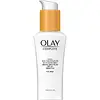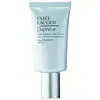What's inside
What's inside
 Key Ingredients
Key Ingredients

 Benefits
Benefits

 Concerns
Concerns

 Ingredients Side-by-side
Ingredients Side-by-side

Ethylhexyl Methoxycinnamate 7.5%
UV AbsorberEthylhexyl Salicylate 2.5%
UV AbsorberOctocrylene 2.5%
UV AbsorberZinc Oxide 7%
Cosmetic ColorantWater
Skin ConditioningIsohexadecane
EmollientGlycerin
HumectantNiacinamide
SmoothingPanthenol
Skin ConditioningCamellia Sinensis Leaf Extract
AntimicrobialTocopheryl Acetate
AntioxidantAloe Barbadensis Leaf Extract
EmollientSteareth-21
CleansingCyclopentasiloxane
EmollientPolyacrylamide
Stearyl Alcohol
EmollientPolymethylsilsesquioxane
Polyethylene
AbrasiveC13-14 Isoparaffin
EmollientBehenyl Alcohol
EmollientDMDM Hydantoin
PreservativeCetyl Alcohol
EmollientTriethoxycaprylylsilane
PEG/PPG-20/20 Dimethicone
EmulsifyingLaureth-7
EmulsifyingSteareth-2
EmulsifyingOleth-3 Phosphate
Disodium EDTA
Iodopropynyl Butylcarbamate
PreservativeEthylhexyl Methoxycinnamate 7.5%, Ethylhexyl Salicylate 2.5%, Octocrylene 2.5%, Zinc Oxide 7%, Water, Isohexadecane, Glycerin, Niacinamide, Panthenol, Camellia Sinensis Leaf Extract, Tocopheryl Acetate, Aloe Barbadensis Leaf Extract, Steareth-21, Cyclopentasiloxane, Polyacrylamide, Stearyl Alcohol, Polymethylsilsesquioxane, Polyethylene, C13-14 Isoparaffin, Behenyl Alcohol, DMDM Hydantoin, Cetyl Alcohol, Triethoxycaprylylsilane, PEG/PPG-20/20 Dimethicone, Laureth-7, Steareth-2, Oleth-3 Phosphate, Disodium EDTA, Iodopropynyl Butylcarbamate
Ethylhexyl Methoxycinnamate 7.5%
UV AbsorberEthylhexyl Salicylate 5%
UV AbsorberButyl Methoxydibenzoylmethane 2%
UV AbsorberWater
Skin ConditioningDimethicone
EmollientCaprylic/Capric/Myristic/Stearic Triglyceride
EmollientButylene Glycol
HumectantCyclopentasiloxane
EmollientCetyl Ricinoleate
EmollientSteareth-2
EmulsifyingDi-C12-15 Alkyl Fumarate
EmollientPolysilicone-11
Pentylene Glycol
Skin ConditioningSteareth-21
CleansingAspalathus Linearis Leaf Extract
Skin ConditioningCamellia Sinensis Leaf Extract
AntimicrobialCoffea Arabica Seed Extract
MaskingPolygonum Cuspidatum Root Extract
AntioxidantTriticum Vulgare Germ Extract
Skin ConditioningBetula Alba Bark Extract
MaskingLaminaria Ochroleuca Extract
Skin ConditioningHordeum Vulgare Extract
EmollientSaccharomyces Lysate Extract
HumectantRosmarinus Officinalis Extract
AntimicrobialVitis Vinifera Seed Extract
AntimicrobialEthylbisiminomethylguaiacol Manganese Chloride
AntioxidantCholesterol
EmollientPhospholipids
Skin ConditioningMaltodextrin
AbsorbentAscorbyl Tocopheryl Maleate
AntioxidantCyclodextrin
AbsorbentSodium Hyaluronate
HumectantHydrogenated Lecithin
EmulsifyingTrehalose
HumectantNordihydroguaiaretic Acid
AntioxidantPalmitoyl Hydroxypropyltrimonium Amylopectin/Glycerin Crosspolymer
Skin ConditioningPantethine
EmollientLinolenic Acid
CleansingOryzanol
Skin ConditioningLecithin
EmollientSqualane
EmollientLinoleic Acid
CleansingGlycerin
HumectantSodium PCA
HumectantUrea
BufferingCaprylic/Capric Triglyceride
MaskingPolyethylene
AbrasiveIsopropyl Myristate
EmollientBehenyl Alcohol
EmollientSodium Carbomer
Emulsion StabilisingTromethamine
BufferingStearyl Alcohol
EmollientPvp
Emulsion StabilisingPolymethyl Methacrylate
Polyquaternium-51
Skin ConditioningCarbomer
Emulsion StabilisingParfum
MaskingDisodium EDTA
Sorbic Acid
PreservativePotassium Sorbate
PreservativeSodium Dehydroacetate
PreservativeChlorphenesin
AntimicrobialPhenoxyethanol
PreservativeLinalool
PerfumingButylphenyl Methylpropional
PerfumingHydroxyisohexyl 3-Cyclohexene Carboxaldehyde
MaskingBenzyl Salicylate
PerfumingCI 77891
Cosmetic ColorantIron Oxides
Ethylhexyl Methoxycinnamate 7.5%, Ethylhexyl Salicylate 5%, Butyl Methoxydibenzoylmethane 2%, Water, Dimethicone, Caprylic/Capric/Myristic/Stearic Triglyceride, Butylene Glycol, Cyclopentasiloxane, Cetyl Ricinoleate, Steareth-2, Di-C12-15 Alkyl Fumarate, Polysilicone-11, Pentylene Glycol, Steareth-21, Aspalathus Linearis Leaf Extract, Camellia Sinensis Leaf Extract, Coffea Arabica Seed Extract, Polygonum Cuspidatum Root Extract, Triticum Vulgare Germ Extract, Betula Alba Bark Extract, Laminaria Ochroleuca Extract, Hordeum Vulgare Extract, Saccharomyces Lysate Extract, Rosmarinus Officinalis Extract, Vitis Vinifera Seed Extract, Ethylbisiminomethylguaiacol Manganese Chloride, Cholesterol, Phospholipids, Maltodextrin, Ascorbyl Tocopheryl Maleate, Cyclodextrin, Sodium Hyaluronate, Hydrogenated Lecithin, Trehalose, Nordihydroguaiaretic Acid, Palmitoyl Hydroxypropyltrimonium Amylopectin/Glycerin Crosspolymer, Pantethine, Linolenic Acid, Oryzanol, Lecithin, Squalane, Linoleic Acid, Glycerin, Sodium PCA, Urea, Caprylic/Capric Triglyceride, Polyethylene, Isopropyl Myristate, Behenyl Alcohol, Sodium Carbomer, Tromethamine, Stearyl Alcohol, Pvp, Polymethyl Methacrylate, Polyquaternium-51, Carbomer, Parfum, Disodium EDTA, Sorbic Acid, Potassium Sorbate, Sodium Dehydroacetate, Chlorphenesin, Phenoxyethanol, Linalool, Butylphenyl Methylpropional, Hydroxyisohexyl 3-Cyclohexene Carboxaldehyde, Benzyl Salicylate, CI 77891, Iron Oxides
 Reviews
Reviews

Ingredients Explained
These ingredients are found in both products.
Ingredients higher up in an ingredient list are typically present in a larger amount.
Behenyl Alcohol is a type of fatty alcohol (these are different from the drying, solvent alcohols).
Fatty Alcohols have hydrating properties and are most often used as an emollient or to thicken a product. They are usually derived from natural fats and oils; behenyl alcohol is derived from the fats of vegetable oils.
Emollients help keep your skin soft and hydrated by creating a film that traps moisture in.
In 2000, Behenyl Alcohol was approved by the US as medicine to reduce the duration of cold sores.
Learn more about Behenyl AlcoholCamellia Sinensis Leaf Extract is derived from the leaves of the tea plant. Black tea, green tea, and oolong tea are all harvested from this plant.
This ingredient has many skin benefits:
This ingredient contains polyphenols, a strong antioxidant. Antioxidants help fight off molecules that damage skin cells.
On top of that, the antioxidants in green tea neutralize free-radicals from the sun. This gives the skin some extra UV protection, but should not replace sunscreen.
Many components of tea have anti-inflammatory properties.
Polyphenols and L-theanine help soothe the skin and reduce irritation. The caffeine in Camellia Sinensis Leaf Extract helps calm inflamed blood vessels.
Other compounds found in tea include: Vitamin Bs, linoleic acid, magnesium, calcium, iron, and zinc.
Research has shown both drinking Camellia Sinensis Leaf Tea and applying it to the skin can help boost skin elasticity and hydration. Studies also show using tea extract may reduce sebum, or oil, production.
Learn more about Camellia Sinensis Leaf ExtractCyclopentasiloxane, or D5, is a silicone used to improve texture of products and trap moisture.
D5 is considered lightweight and volatile. Volatile means it evaporates quickly after application. Once evaporated, D5 leaves a thin barrier that helps keep skin hydrated.
It is also an emollient. Emollients help soften the skin and prevent water loss. Silicones create a silky texture in products. D5 helps other ingredients become more spreadable.
Studies show D5 is safe to use in skincare products. We recommend speaking with a skincare professional if you have concerns.
Learn more about CyclopentasiloxaneDisodium EDTA plays a role in making products more stable by aiding other preservatives.
It is a chelating agent, meaning it neutralizes metal ions that may be found in a product.
Disodium EDTA is a salt of edetic acid and is found to be safe in cosmetic ingredients.
Learn more about Disodium EDTAEthylhexyl Methoxycinnamate is an organic compound that provides UVB protection. It often goes by the more common name of octinoxate. It is created from methoxycinnamic acid and 2-ethylhexanol.
Ethylhexyl Methoxycinnamate absorbs UVB rays with wavelengths between 280-320 nm. UV absorbers protect your skin by using chemical reactions to convert UV rays into heat and energy.
UVB (290-320 nm) rays emit more energy than UVA rays. They are capable of damaging DNA, causing sunburns and are thought to be linked to skin cancer.
The state of Hawaii has banned sunscreens containing octinoxate due to its potential impact on coral reefs. More research is needed to bridge gaps in this research. The European Union allows higher levels of octinoxate in sunscreens than the US and Australia.
Ethylhexyl Methoxycinnamate is oil soluble. It is not stable and may lose efficacy when exposed to sunlight.
Learn more about Ethylhexyl MethoxycinnamateEthylhexyl Salicylate is an organic compound used to block UV rays. It primarily absorbs UVB rays but offers a small amount of UVA protection as well.
Commonly found in sunscreens, Ethylhexyl Salicylate is created from salicylic acid and 2-ethylhexanol. You might know salicylic acid as the effective acne fighter ingredient and BHA.
The ethylhexanol in this ingredient is a fatty alcohol and helps hydrate your skin, similar to oils. It is an emollient, which means it traps moisture into the skin.
According to manufacturers, Ethylhexyl Salicylate absorbs UV wavelength of 295-315 nm, with a peak absorption at 307-310 nm. UVA rays are linked to long term skin damage, such as hyperpigmentation. UVB rays emit more energy and are capable of damaging our DNA. UVB rays cause sunburn.
Learn more about Ethylhexyl SalicylateGlycerin is already naturally found in your skin. It helps moisturize and protect your skin.
A study from 2016 found glycerin to be more effective as a humectant than AHAs and hyaluronic acid.
As a humectant, it helps the skin stay hydrated by pulling moisture to your skin. The low molecular weight of glycerin allows it to pull moisture into the deeper layers of your skin.
Hydrated skin improves your skin barrier; Your skin barrier helps protect against irritants and bacteria.
Glycerin has also been found to have antimicrobial and antiviral properties. Due to these properties, glycerin is often used in wound and burn treatments.
In cosmetics, glycerin is usually derived from plants such as soybean or palm. However, it can also be sourced from animals, such as tallow or animal fat.
This ingredient is organic, colorless, odorless, and non-toxic.
Glycerin is the name for this ingredient in American English. British English uses Glycerol/Glycerine.
Learn more about GlycerinPolyethylene is a synthetic ingredient that helps the skin retain moisture. It is a polymer.
It is also typically used within product formulations to help bind solid ingredients together and thicken oil-based ingredients. When added to balms and emulsions, it helps increase the melting point temperature.
Steareth-2 is a waxy compound used to emulsify ingredients. It is created from polyethylene glycol and stearyl alcohol.
The 2 stands for the number of ethylene oxide units used to create this ingredient.
We don't have a description for Steareth-21 yet.
Stearyl Alcohol is a type of fatty alcohol from stearic acid. It is a white, waxy compound used to emulsify ingredients.
Fatty Alcohols are most often used as an emollient or to thicken a product. Emollients help soothe and hydrate the skin by trapping moisture.
They are usually derived from natural fats and oils and therefore do not have the same drying or irritating effect as solvent alcohols. FDA allows products labeled "alcohol-free" to have fatty alcohols.
Learn more about Stearyl AlcoholWater. It's the most common cosmetic ingredient of all. You'll usually see it at the top of ingredient lists, meaning that it makes up the largest part of the product.
So why is it so popular? Water most often acts as a solvent - this means that it helps dissolve other ingredients into the formulation.
You'll also recognize water as that liquid we all need to stay alive. If you see this, drink a glass of water. Stay hydrated!
Learn more about Water